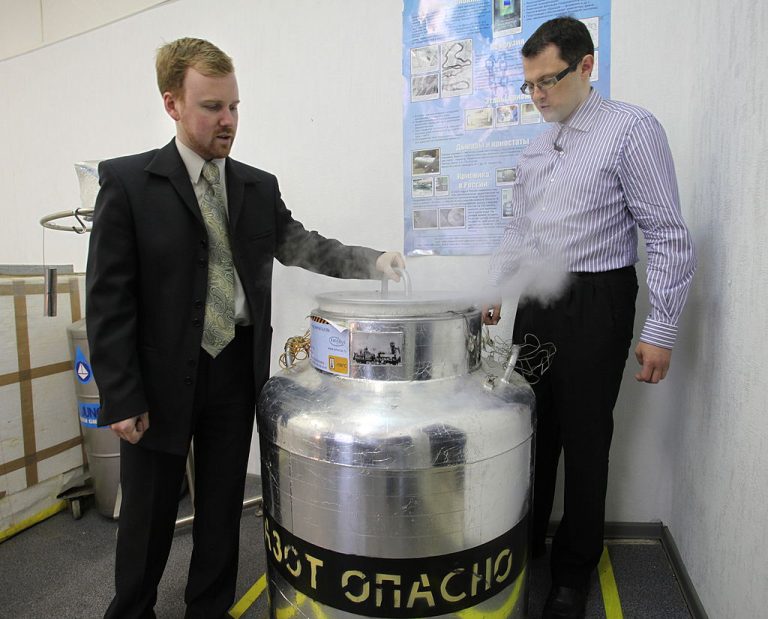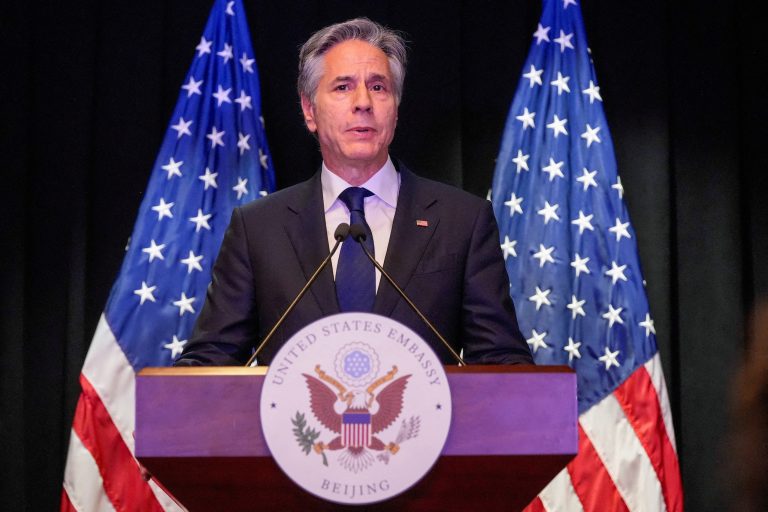“So they’re not really dead. They’re just legally dead,” is how Max More, CEO of Scottsdale, Arizona-based Alcor Life Extension Foundation framed the state of the 199 humans and “almost 100 pets” who are currently cryogenically frozen by his company in an interview with the UK’s Metro.
“They’re not biologically dead, obviously, because you can delay all kinds of organs which are still viable and keep other people alive. It just means that something critical has failed which we cannot fix today,” More added.
He continued, “Our patients are not dead, and that’s why we call them patients. They’re very much like people who are in a long-term coma, except there’s no metabolism.”
And while the spokesperson’s comments may appear at first glance to be something one would find in The Onion, The Babylon Bee, or an early-era episode of the classic William Shatner Star Trek, Metro’s camera team took footage of Alcor’s storage facility, a dark, blue-lit room filled with what appears to be rows of dozens of hot water tank-shaped objects.
An Oct. 12 article by Reuters on the subject reveals some information about the kinds of people stored within Alcor’s pseudo-catacombs.
Success
You are now signed up for our newsletter
Success
Check your email to complete sign up
One is a 2-year-old girl from Thailand, Matheryn Naovaratpong, who died of brain cancer in 2015. More explained her story briefly, “Both her parents were doctors and she had multiple brain surgeries and nothing worked, unfortunately. So they contacted us.”
Others “asleep” in the depths are Hal Finey, who eventually gained fame as being the recipient of the first Bitcoin transaction, but died of ALS in 2014, and baseball legend Ted Williams, who passed away in 2002.
More gave Metro an example rundown of the process used to preserve the corpses, stating that they have to wait until the person has been declared clinically dead before moving them from their hospital bed and into an object that looks something like a rubber coffin packed with ice, which is then filled with water.
The second stage involves attaching a mechanical CPR actuator and a respirator to the deceased. More said this is to ensure blood circulation through the cadaver in order to cause the remaining body heat to evenly dissipate into the ice bath.
Additionally a “series of medications” is administered to “protect cells against damage.”
The CEO explained further that “We don’t want to freeze the patient. We want to vitrify them.”
He said the idea was ideally to avoid causing the cells to freeze and be damaged by ice or begin to dehydrate, but to instead achieve the aim of having the surrounding solution “just get thicker and thicker, like a glassy block holding all the cells in place…”
The process described may have taken its inspiration from when Han Solo was frozen in carbonite by Darth Vader during the Star Wars movie.
More’s wife, Natasha Vita-More, is signed up to have her brain suspended through the company’s process, Metro stated.
Natasha, who is described as a futurist and an author, told the outlet that she envisions a future where everyone can be dethawed and happily reunited with their also-frozen family members and pets if mankind’s science ever advances far enough.
“The disease or injury cured or fixed, and the person has a new body cloned or a whole body prosthetic or their body reanimated and meet up with their friends again,” she fantasized.
But according to Reuters, more experts believe the entire thing is thinly veiled science fiction aiming to extract life insurance policies.
New York University’s Grossman School of Medicine’s head of medical ethics, Arthur Caplan, told Reuters, “This notion of freezing ourselves into the future is pretty science fiction and it’s naive.”
“The only group… getting excited about the possibility are people who specialize in studying the distant future or people who have a stake in wanting you to pay the money to do it.”
The article explained that Alcor charges $200,000 per body and $80,000 per brain for its services, with the family of most buyers covering the charge by making the firm the sole beneficiary of the deceased’s life insurance plan.
But perhaps the concept itself is not entirely farfetched. In a September article on cryogenics technology, Forbes stated there are some scientific examples that show viability.
“In 1954, using glycerol, human sperm was frozen, rewarmed, and successfully used to impregnate three women,” the article stated.
And added, “In 1983, the first human embryo was successfully cryopreserved. Ever since then, cryopreservation of human blood, stem cells, sperm, oocytes, and embryos, with more than 300 000 births happening from frozen embryos today.”
















